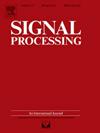Elastic Supernet with Dynamic Training for JPEG steganalysis
IF 3.4
2区 工程技术
Q2 ENGINEERING, ELECTRICAL & ELECTRONIC
引用次数: 0
Abstract
JPEG is the predominant image format across social networks, serving as a prime cover medium for image steganography. However, previous deep learning models for JPEG steganalysis heavily rely on domain expertise and tedious trial-and-error methods. In this paper, we propose a two-stage neural architecture search scheme for JPEG steganalysis, based on Elastic Supernet with Dynamic Training (ESDT). The method involves constructing a weight-nesting supernet, with the largest subnetwork pretrained on ImageNet (a large-scale visual database widely used for pretraining deep learning models) and finetuning for JPEG steganalysis. Based on this pretrained network, we aim to enhance the model’s performance in downstream tasks while reducing reliance on domain knowledge. A progressive shrinking strategy is introduced during supernet training to accommodate the need of elastic kernel sizes, depths, and widths. In the final stage, we utilize a performance predictor to identify the optimal subnetwork within the refined supernet. Extensive experiments showcase the method’s superiority over state-of-the-art methods in JPEG steganalysis, achieving lower computational costs and superior generalization performance.
基于动态训练的JPEG隐写分析弹性超网络
JPEG是社交网络中主要的图像格式,是图像隐写术的主要覆盖介质。然而,以前用于JPEG隐写分析的深度学习模型严重依赖于领域专业知识和繁琐的试错方法。本文提出了一种基于弹性超网络动态训练(ESDT)的两阶段神经结构搜索方案,用于JPEG隐写分析。该方法包括构建一个权重嵌套超级网络,其中最大的子网在ImageNet(一种广泛用于深度学习模型预训练的大规模视觉数据库)上进行预训练,并对JPEG隐写分析进行微调。基于该预训练网络,我们的目标是提高模型在下游任务中的性能,同时减少对领域知识的依赖。在超级网络训练过程中引入了一种渐进收缩策略,以适应弹性核尺寸、深度和宽度的需要。在最后阶段,我们利用性能预测器来确定精炼超级网络中的最佳子网。大量的实验表明,该方法在JPEG隐写分析中优于最先进的方法,实现了更低的计算成本和更好的泛化性能。
本文章由计算机程序翻译,如有差异,请以英文原文为准。
求助全文
约1分钟内获得全文
求助全文
来源期刊

Signal Processing
工程技术-工程:电子与电气
CiteScore
9.20
自引率
9.10%
发文量
309
审稿时长
41 days
期刊介绍:
Signal Processing incorporates all aspects of the theory and practice of signal processing. It features original research work, tutorial and review articles, and accounts of practical developments. It is intended for a rapid dissemination of knowledge and experience to engineers and scientists working in the research, development or practical application of signal processing.
Subject areas covered by the journal include: Signal Theory; Stochastic Processes; Detection and Estimation; Spectral Analysis; Filtering; Signal Processing Systems; Software Developments; Image Processing; Pattern Recognition; Optical Signal Processing; Digital Signal Processing; Multi-dimensional Signal Processing; Communication Signal Processing; Biomedical Signal Processing; Geophysical and Astrophysical Signal Processing; Earth Resources Signal Processing; Acoustic and Vibration Signal Processing; Data Processing; Remote Sensing; Signal Processing Technology; Radar Signal Processing; Sonar Signal Processing; Industrial Applications; New Applications.
 求助内容:
求助内容: 应助结果提醒方式:
应助结果提醒方式:


